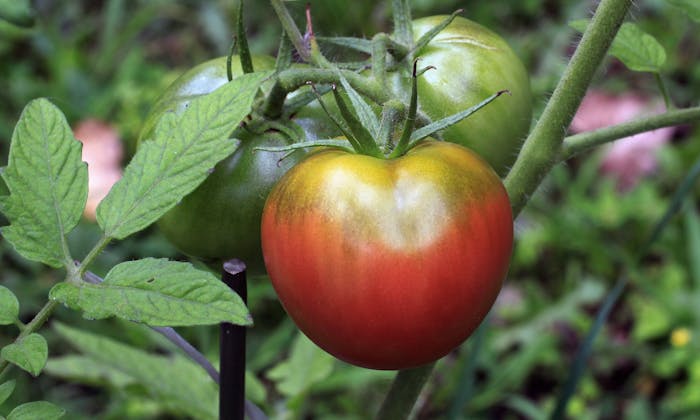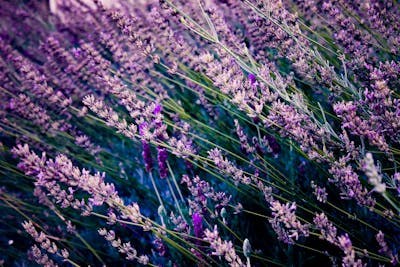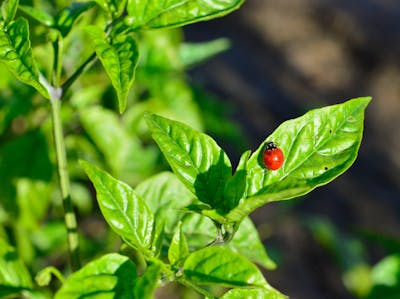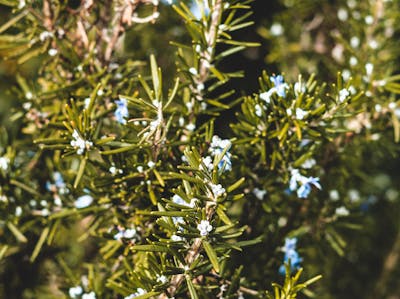When it comes to choosing which vegetables to grow, tomatoes check just about all of the boxes. Store bought tomatoes represent the shortcomings of our modern food web with production prioritizing quantity over flavor and nutrition, meaning they are either vastly inferior, expensive or both.
But you can grow great tomatoes at home easily. And in Southern California we have the advantages of warm soil and ample sunlight that tomatoes crave, for nearly the whole year.
Tomatoes are easy, but there are a few things to know to ensure a bountiful, delicious crop:
- Choose the Right Variety
- Plant at the Right Time
- Start in a container or in the ground
- When and What To Feed Them
- Potential Problems
Choosing the Right Variety
It's important to choose the right variety for the season and your location.
Try our Tomato Planner to help you choose which variety is right for you!
If you look at the tomato seedlings growing at your local garden center, you'll see a bevy of names that bare little resemblance to the varieties you might be familiar with at the supermarket. Names like: "German Johnson", "Yellow Pear", "Black Krim". These names are obviously put there by a marketing department looking to quickly evoke some sort of feeling and, if you are lucky, give some meaningful information.
The name may imply, is it a cold season variety? Is a it a big ol "Beefsteak" or a tiny little "grape"? Is it an heirloom?
Determinant or Indeterminant
If you have limited space, or limited patience, you might choose to grow determinant tomatoes. Otherwise, I highly recommend indeterminent.
Determinant tomatoes are vines that grow to a specific size (about 4-6 feet) and then stop growing. They tend to bloom sooner. The downside of this is that they tend to bloom for only a short period of time, meaning they fruit for only a short period of time.
Indeterminant tomatoes don't stop growing until they start dying. That means they will just get larger and larger all year until they are spent. During this time they grow several feet larger than determinant varieties. They also bloom and fruit this entire time, producing less fruit at any one time than determinants, but more fruit altogether.
The tomato plants you buy from the store aren't always labelled "determinant" or "indeterminant." If it is, it's often buried in the description. So you may have to look it up before you buy. But I find most varieties of tomato I come across are indeterminant.
Fruit Size
I probably don't have to tell you the different fruit sizes. The original wild tomato berries are actually the size of berries, not much larger than blueberries! The sizes you might look for are, from smallest to largest: "grape", "cherry", "plum" or "roma", and "beefsteak". Heirlooms tend to be beefsteak size.
What are Heirloom Tomatoes?
As I mentioned before, wild tomatoes are quite small. But they were domesticated a long time ago. Heirlooms are varieties of tomatoes that have been passed down from generation to generation, outside of the mass-market commercial growers world. Their skin is full of wonderful flaws and odd colors because they've been bred mainly for their flavor.
Trellising Tomatoes
Is it necessary to trellis tomatoes?
The simple answer is no, but it is highly recomended. Tomatoes will grow naturally on the ground. But they will take up more of your precious growing space and be more prone to disease and rot.
There are lots of different techniques and devices to choose from when it comes to trellising tomatoes. The one that is best for you depends on your growing conditions and how much work you want to put into it.
One trellising tool to beware of is the classic, flimsy tomato cage. The problem with these isn't so much the design as the quality. I find they are way too frustrating to work with, so difficult to get a good anchor into the ground. A good wind is likely to knock them over. Once your tomato vine has fallen, the damage is likely to be too much to recover from. What a disappointment that can be after months of waiting and care!
Growing From Seed
Tomatoes are probably the most transplanted of all vegetables in the home garden. Garden centers are filled with seedlings. Here in California, pretty much throughout the whole year. This is a pretty good clue that you can start tomatoes and transplant them later. In fact, there are many possible advantages to doing it this way.
The most common reason cited is that tomatoes are annuals. They require a lot of heat to get started. In order to maximize your yield, you can start tomatoes indoors months before they would grow outdoors. And just be sure to transplant them after the risk of frost has passed.
Tomato seedlings are also at high risk of a couple of diseases, such as "stem rot", which comes from a fungus that attacks the stem. If you start them indoors, you can do more to make sure their environment is safe from the spores. By the time you transplant them, their stems are strong and they are no longer at risk from the disease.
Tomatoes are not difficult to grow from seed. If the season hasn't already started, I recommend taking this approach. Especially because it is so much easier to get ahold of interesting varieties of seeds than of seedlings.
Tomatoes will not grow until the soil temperature is above 60°F. They love heat. If you want to grow them in a colder environment, you can provide them with a heat mat and cover them so that all of the heat is trapped in the soil.
Caring for your Seedlings (Kill Your Babies)
Give them plenty of space
To build a hearty, fruiting vine, give your tomato plants space. This starts early. So when you transplant your seedlings into 4" pots, make sure there is only one per pot. Competition will stunt them early and make them more subject to disease and growth issues even much later in life when the problem is resolved.
Blow them with a fan
Not right away, but once they are a couple of inches tall, put a fan on them. The movement is necessary for the seedling to form strong vines. The fan should be strong enough (and close enough) to simulate a gentle breeze. And it only needs to run for about 10 minutes, twice per day.
Raising Healthy, Productive Tomato Plants
Fertilize
Fertilize with a lower nitrogen fertilizer. Two commonly recommended fertilizers are NPK: 8-32-16 and 6-24-24. What works best for you will depend on your soil, but notice the lower nitrogen levels. Too much nitrogen will products plants that are very healthy looking, very green, with lots of foliage, but do not bear fruit.
Fan them Indoors
If you are growing your tomatoes indoors, make sure they get time with a fan. Tomatoes need air movement to form strong stems. If you don't use a fan, you can jiggle them manually with your hand, just don't be too rough.
About Sunlight
Tomatoes love heat and sun, which is why they grow so well here. But there is such a thing as too much of a good thing during the more intense months of the year. Protect them from extremely intense sunlight. This applies to us in Southern California in the summer months.
If your tomato plants start to look brown and burnt, this is most likely the reason. You might want to set up some sort of screen to provide shade during the more intense hours of the day (just after noon). I prefer to do this naturally, if possible, with a well placed tree. Still, make sure they receive about of 6-8 hours of strong sunlight during the day.
Pruning and Square Foot Gardening
In square foot gardening, a tomato plant gets one square. Compared to traditional planting, that is not a lot of space. You normally leave 2-3 feet of space around a tomato plant. They become large and bushy and easily crowd out other plants.
To make up for the difference, you can choose tomatoes that vine better, so they grow more vertically up your trellis. Or you can choose smaller, bushier types, like cherry tomatoes.
Typically, because of their size, you want to locate your tomatoes on the northern edge of your planting bed (that would be southern edge if you were in the Southern Hemisphere). You are going to help them to grow up and you don't want them to shade out your other plants.
The other important tip here is pruning. This is essential in square foot gardening, and optional otherwise. You want to make sure your tomato plant is growing in the direction you need it to grow and you also want to make sure there is good air circulation. Wait until after the first flower has appeared to tie your plant to a trellis and to start thinking about pruning. After this point, any time a sucker appears which would cause the plant to branch out from the main stem, remove it.
Pruning helps grow the tomato plant in a tighter space. It may reduce your overall yield because you have reduced growing space. The tradeoff is it also helps the plant concentrate energy into the fruits that it does produce, so you will have larger, more flavorful fruits. To make up for the loss in yield, plant another tomato plant, this is a great opportunity to add variety to your garden.





